Pond Predators
Dragonflies and Damselflies (Order Odonata)
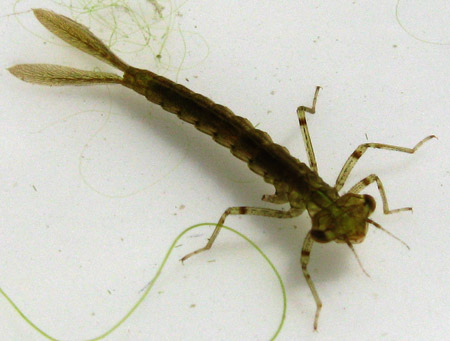
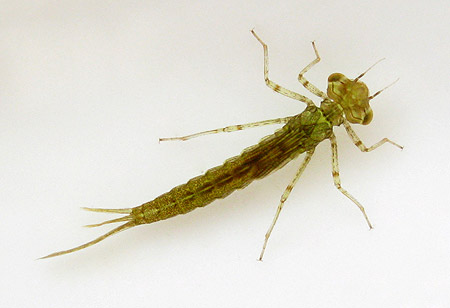
Damselfly Nymphs
Dragonflies and Damselflies are closely related. They both need water to breed so it is not surprising to find them hovering around the frog pond. I should be pleased… their presence is an indication of a healthy pond environment with good water quality.
Dragonflies and Damselflies are carnivorous as both adults and nymphs. The nymphs feed on aquatic insects, worms, tadpoles, sometimes small fish and can be cannibalistic. I have found many nymphs in the pond over the last few weeks and no tadpoles or eggs in sight!
Grrrr…..
These nymphs are obviously excellent predators so I am removing them when I see them to reduce the numbers.
On the positive side, mosquito larvae are non-existent in the pond so I have the nymphs to thank for that. I do not keep any fish as I found they had developed a taste for frog spawn. The evicted nymphs have been placed in a water garden pot with plenty of mozzie larvae to keep them happy.
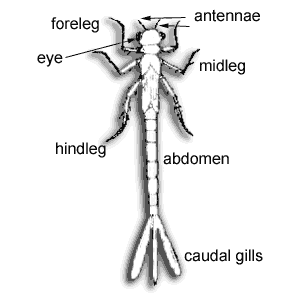
Damselflies ( left )
(sub-order of Zygoptera)
The nymphs are long and slender compared with the dragonfly nymphs. They have 3 leaf-like caudal gills at the rear of the abdomen.
Size: up to 35 mm including gills
Movie clip of a Damselfly Larva capturing a few mini water bugs – Peron’s Treefrog calling in the background
** More than eight-tenths of their brain is devoted to analysing visual information **
[flash http://mybackyard.info/movies/damselfly.flv w=400 h=300]
Dragonflies
(sub-order of Anisoptera)
A Dragonfly nymph has a stout body compared to the Damselfly nymph. They breathe by sucking water into the abdomen over an internal gill. This gill is connected to the outside of their body by an anal pyramid. They can escape quickly from threats by squirting water out helping to propel them forwards in the water.
Size: up to 50 mm
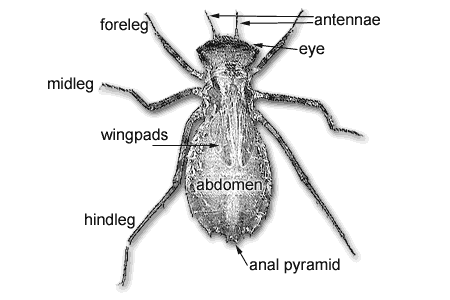
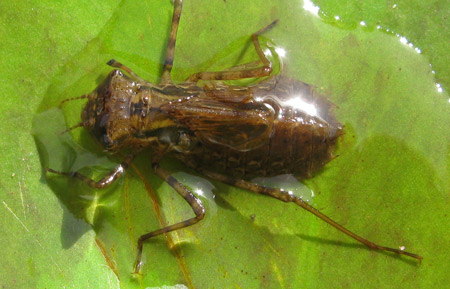
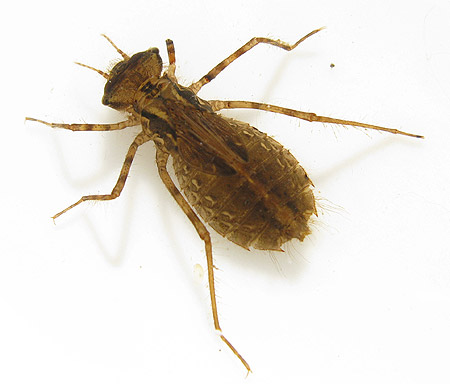
Dragonfly Nymphs – I think the leg section was damaged during capture
Edit: 25th January 2009
Today I managed to photograph an adult Dragonfly which had been hovering around the pond.
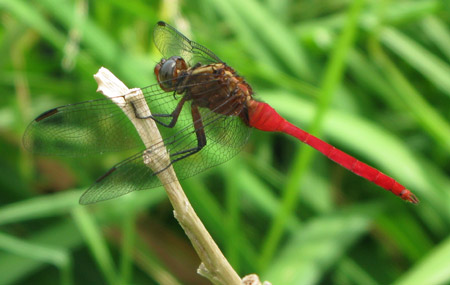
Dragonflies are larger and have thicker bodies than damselflies. They usually spread their wings when at rest while the damselfly will hold its wings together above its body. Dragonfly eyes are close together compared to those of a damselfly. Their fore and hind wings differ in shape whereas the damsel’s are similar and narrow at the base.
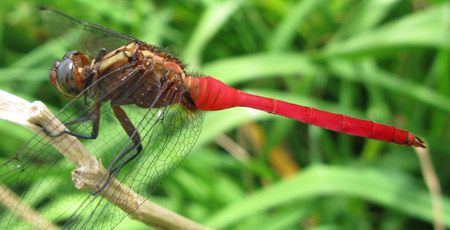
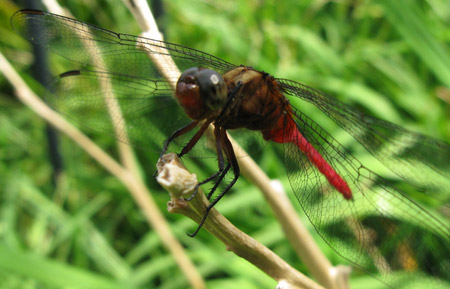
Posted on January 8th, 2009 by Sue
Filed under: Insects

Beautiful pics, I love the dragonfly’s colours!
Glad to hear the evicted nymphs found another home!
amazing stuff thanx 🙂
da best. Keep it going! Thank you
sooo werid but i loved it. p.s. i have frog and gross bugs in my pool.
Dragonfly nymps have eaten throught all 25 blue eyes and all their babies. No tadpoles either. They have now become cannibals as there is nothing left to eat but mosquito lava. How can I prevent this from happening next year.
Hi Laura,
I don’t know that you can..
I had the same problem with nymphs and my tadpoles. I tried cleaning out the whole pond to remove them but they were back in no time. This year I have tadpoles again and the nymphs are not as numerous. The only difference seems to be the amount of pond plants I have. I seem to have plants everywhere…. a tangled mess of roots and shoots. Perhaps that has helped ?
i want to know what the caudal gills are for thanx!